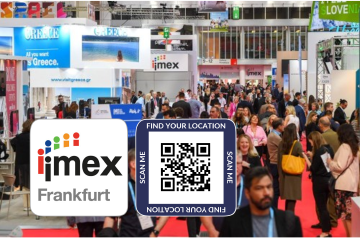Crowd Connected unveils free-to-use indoor positioning system

Crowd Connected unveils free-to-use indoor positioning system
● The Sail platform radically reduces the time, effort and cost to implement and maintain ‘blue-dot’ wayfinding on smartphones in any building.
● Uniquely, Sail can be deployed in a matter of hours, by anyone, on a completely self-service basis.
● Built-in mapping capability, as well as out-of-the-box integrations with leading indoor mapping providers.
● Zero fees for unlimited usage with a single floor plan.
Location analytics provider, Crowd Connected, has unveiled its new indoor positioning system (“IPS”) named Sail.
Sail radically reduces the time, effort and cost for ‘blue dot’ positioning in any building, enabling organisations to quickly and easily provide smartphone-based interactive wayfinding for their visitors or customers.
Sail is differentiated from legacy IPS solutions in a number of ways:
- Simple to set up. Designed to be entirely self-service, it is the first IPS that allows anyone to sign up, configure, and download an evaluation app to assess the technology in a day.
- Smart. Sail uses the latest developments in machine learning to constantly optimise its positioning algorithms
- Straightforward to deploy and maintain. There is no requirement for any fingerprinting, calibration or for site visits.
- Easy to use. Sail features built-in mapping or the option to use third-party indoor mapping providers to add points of interest, routing and other features.
- Low risk and low cost. In a ground-breaking move, Crowd Connected is making Sail free to licence, even for extended commercial usage. No usage caps. No time limits. The only restriction is a single floor plan. For multiple floor plans, Sail is offered on a simple monthly subscription model with no upfront payment and no lengthy contract commitment.
Sail works by fusing Bluetooth low energy (“BLE”) radio-frequency signals with inertial data sourced from the smartphone’s other sensors to accurately and reliably position a smartphone. Typically this is to a few meters, a similar level of accuracy as GPS.
A low density of BLE wireless transmitters (known as beacons) is required. Sail works with any beacons that can operate in iBeacon mode. Such devices are widely available, battery-powered (meaning installation is straightforward), small and low cost.
By integrating the Sail mobile library, any iOS or Android app can provide ‘blue dot’ indoor navigation for visitors and customers. That means Sail is compatible with billions of smartphones in use today.
From launch the Sail indoor positioning soluton can be used with any floorplan – either via the in-built system or through integrations with leading indoor mapping providers.
Crowd Connected’s Founder and CEO James Cobb said: “We’ve all become accustomed to the ‘blue dot on a map’ experience on our phones when we’re outdoors. But this hugely valued navigational aid invariably disappears when you move indoors, because GPS does not penetrate buildings.
“Indoor navigation has failed to take off because, in general, it has been too difficult to deploy, too complex to maintain, and too expensive to deliver. So we’ve made Sail fundamentally different.”
Cobb continued: “Most physical businesses are in a battle with digital services. And they are at a disadvantage. The first step in levelling up is to make your physical offering as easy to navigate as your website.
“But if indoor navigation is to become genuinely widespread, the technology must be quick and cheap to install, easy to configure and with minimal ongoing overhead.”


